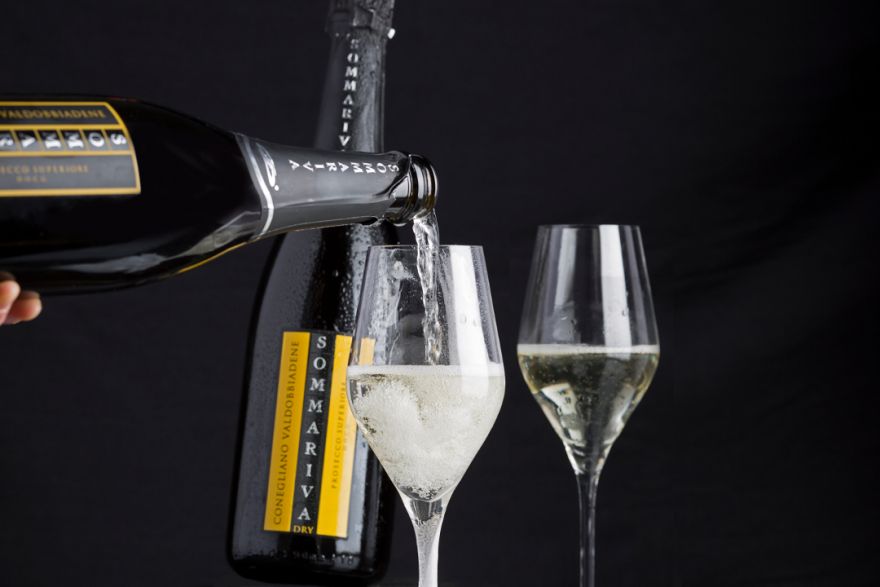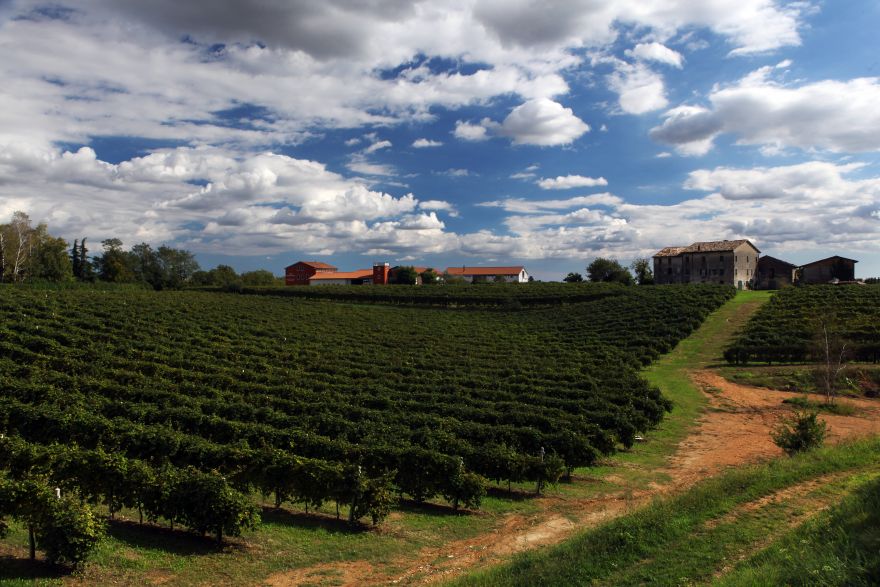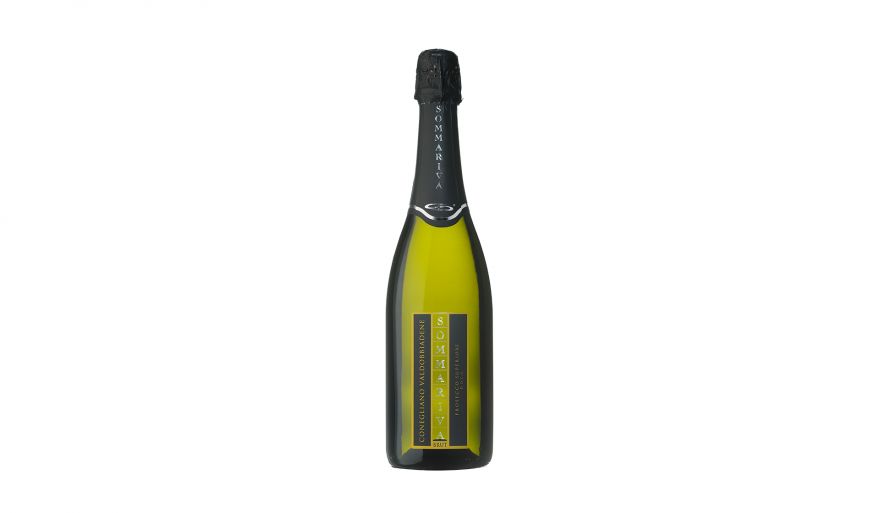5 things you should know about the bubbles in a Conegliano Valdobbiadene DOCG.
Whether it is a Conegliano Valdobbiadene DOCG or a classic méthode champenoise, such as a Trento DOC, the visual aspect of a sparkling wine already tells us a lot about the quality of the product.
In particular, in addition to the colour of the wine, which is obviously a central issue, the aspect that we are going to look at more carefully is the effervescence of the wine – in other words, the bubbles.
Why is the right glass so important?
Before moving on to the characteristics of perlage, it is a good idea to consider the importance of the glass. Until a few years ago, the main glass for tasting a sparkling wine was the flute – a glass with a thin stem and an elongated shape that had, and still has, the undoubted advantage of making the most of the effervescence. Being narrow, the flute, in fact, limits the emission and dispersion of bubbles making them absolutely the principal characters of our visual examination; we see them rising upwards in a continuous carousel.
The limit of the flute however, in particular for a wine like Conegliano Valdobbiadene DOCG that has a moderately aromatic olfactory component - unlike a Moscato, for example, where it is much more marked - is that it inhibits the expansion of the aroma. The floral and fruity notes are one of the most typical characteristics of Prosecco Superiore DOCG and to make the most of them the choice of the right glass is essential. In this case then we will use a tulip glass, the large surface of which allows the Prosecco to express itself at its best and to let us grasp all its expressive nuances. Nowadays, the tulip glass (of which there are countless variations) is the favourite also for the tasting of classic method wines, including Champagne.
A small note of advice. Conegliano Valdobbiadene DOCG is not a beer, therefore, it should not be poured into a tilted glass. Although there are different schools of thought, the most accredited one, in our opinion, requires that the wine be poured steadily to favour the production of foam, naturally as gracefully as possible, until the level of the wine (not the foam!) has reached the widest part of the glass.
Now that we have poured our Conegliano Valdobbiadene into the glass, let's evaluate its effervescence.
The 5 fundamental things
As we all know by now, effervescence is a phenomenon due to the presence of carbon dioxide which, in contact with oxygen during the act of pouring the wine into the glass, causes froth and bubbles. Whatever the method used to make the wine (Charmat or Champenoise), and however banal it may seem, this is the indispensable characteristic that a sparkling wine must possess.
The examination of effervescence (otherwise known as pétillement or, more commonly, perlage) will have to evaluate:
- The foam. It must be neither too thick nor too creamy, but fine and dry, then fade within a few seconds.
- The quantity of bubbles. They must be very numerous and continuous, not sporadic.
- The grain of the bubbles. The smaller the diameter, the greater the finesse and quality of the sparkling wine. This certainly depends on the type of wine and the method of production.
- The persistence of the phenomenon. In a quality sparkling wine, the bubbles are fed by the fountain that pushes them to the surface. In this case it is good to evaluate both the continuity of the perlage and the speed of ascent, which must be as slow as possible.
- The collar. That is the ring of very fine froth which, once the initial froth has vanished, forms around the wall of the glass. The persistence of the collar is due to the bubbles which, upon reaching the surface, spread outwards around the wall of the glass remaining attached to it.
All these characteristics, but in particular the minimum size, the high number and the long persistence, indicate a good sparkling wine production process and announce, in the gustatory phase, a pleasant sparkling wine, free from an annoying excess of gas.
One last tip. When you are about to evaluate the perlage, do not swirl the wine in the glass to enhance the aromatic aspect of the wine as you would commonly do with any quality still wine, whether white or red; otherwise, you will get the undesirable effect of dampening the charge of the bubbles accelerating the disappearance of carbon dioxide.






